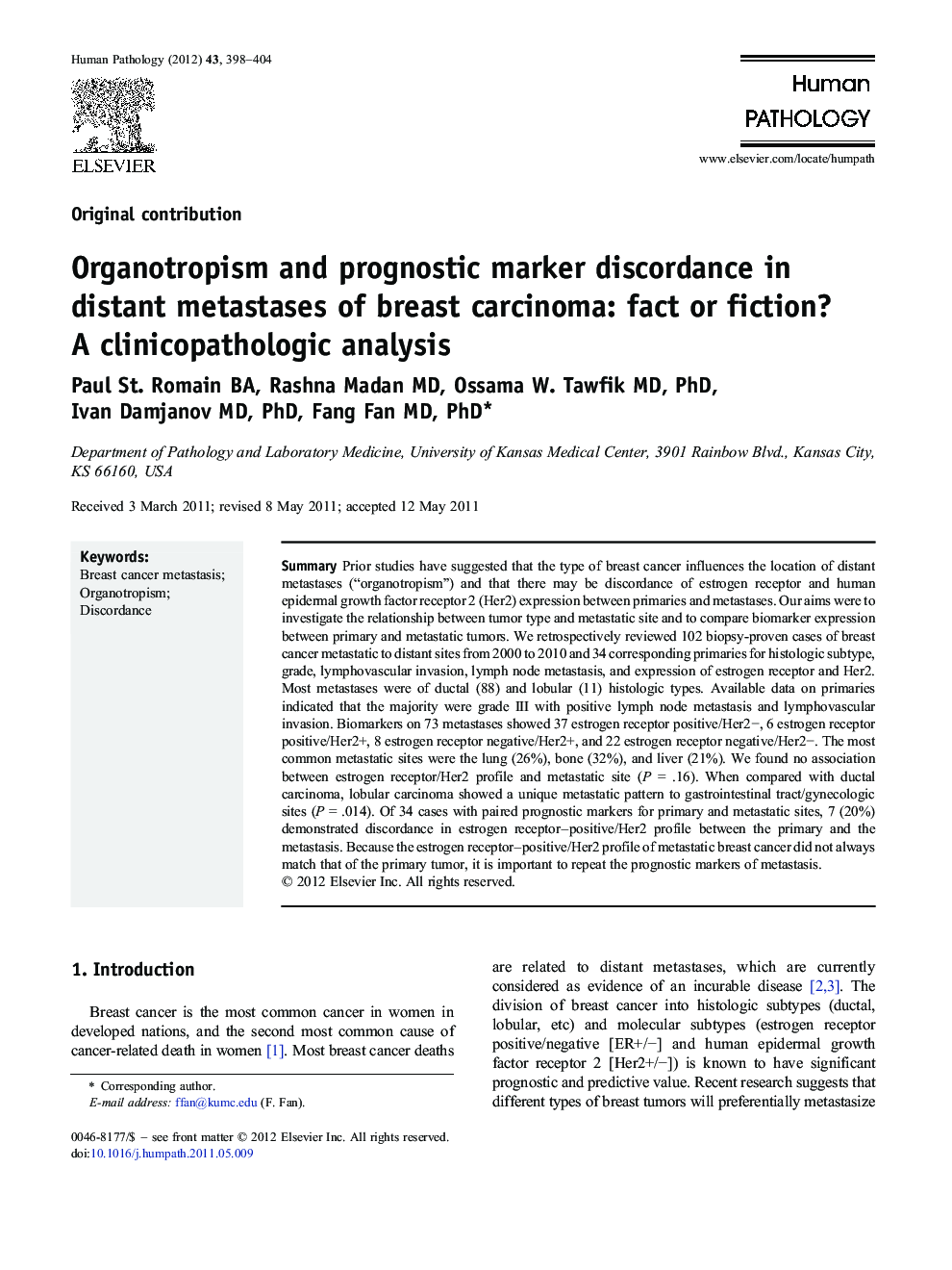| Article ID | Journal | Published Year | Pages | File Type |
|---|---|---|---|---|
| 6216269 | Human Pathology | 2012 | 7 Pages |
SummaryPrior studies have suggested that the type of breast cancer influences the location of distant metastases (“organotropism”) and that there may be discordance of estrogen receptor and human epidermal growth factor receptor 2 (Her2) expression between primaries and metastases. Our aims were to investigate the relationship between tumor type and metastatic site and to compare biomarker expression between primary and metastatic tumors. We retrospectively reviewed 102 biopsy-proven cases of breast cancer metastatic to distant sites from 2000 to 2010 and 34 corresponding primaries for histologic subtype, grade, lymphovascular invasion, lymph node metastasis, and expression of estrogen receptor and Her2. Most metastases were of ductal (88) and lobular (11) histologic types. Available data on primaries indicated that the majority were grade III with positive lymph node metastasis and lymphovascular invasion. Biomarkers on 73 metastases showed 37 estrogen receptor positive/Her2â, 6 estrogen receptor positive/Her2+, 8 estrogen receptor negative/Her2+, and 22 estrogen receptor negative/Her2â. The most common metastatic sites were the lung (26%), bone (32%), and liver (21%). We found no association between estrogen receptor/Her2 profile and metastatic site (P = .16). When compared with ductal carcinoma, lobular carcinoma showed a unique metastatic pattern to gastrointestinal tract/gynecologic sites (P = .014). Of 34 cases with paired prognostic markers for primary and metastatic sites, 7 (20%) demonstrated discordance in estrogen receptor-positive/Her2 profile between the primary and the metastasis. Because the estrogen receptor-positive/Her2 profile of metastatic breast cancer did not always match that of the primary tumor, it is important to repeat the prognostic markers of metastasis.
